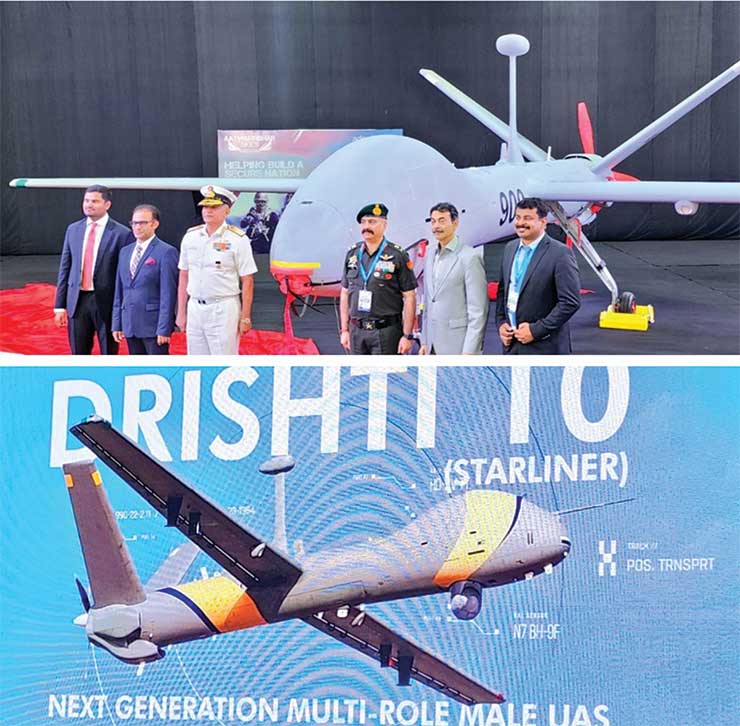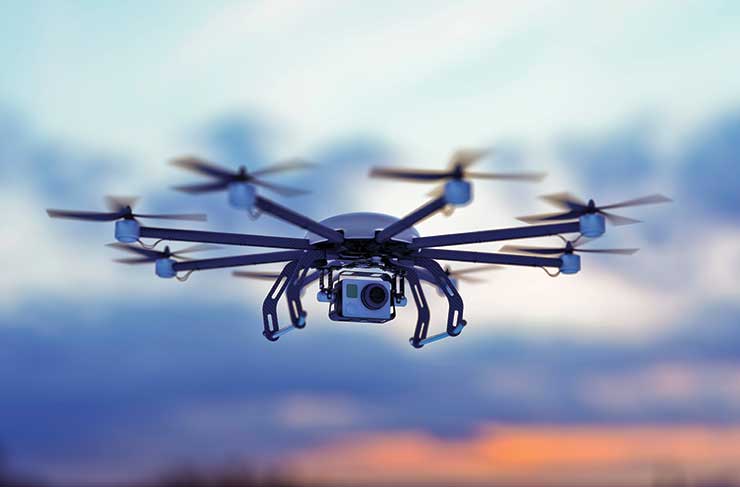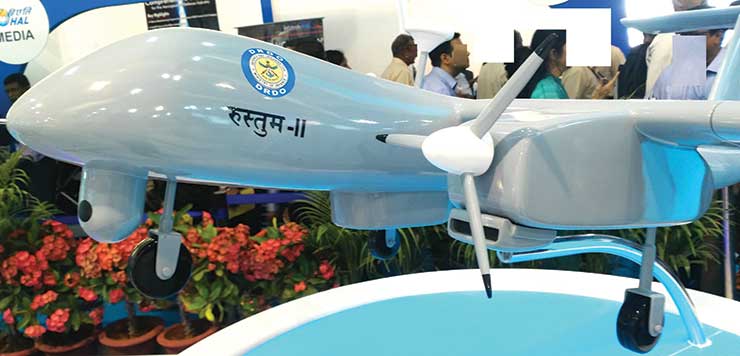
The promulgation of the Unmanned Aircraft System (UAS) Rules in 2021 marked a momentous milestone for India’s unmanned systems. On the heels of that, India banned the import of drones except for research and development, defence, and security purposes. However, the ban did not extend to drone components. In addition, the Indian government stepped up efforts to encourage the market’s expansion by launching various programmes, such as Drone Shakti, a production-linked reward system, additional air space, and other initiatives. The stage was set for driving India’s ambitious aim of making India a global drone hub by 2030. In August 2022, EY-FICCI published a report titled “Making India the drone hub of the world.” The report projected a CAGR of 80% growth in the period from 2020 to 2025 for the UAS industry, a surge in market size from Rs 2,900 crore to Rs 81,600 crore. However, the pace of growth for unmanned systems in India has been nowhere near the projected figures. The sluggish growth rate can be attributed to several factors.
Drone Mindset
Bollywood blockbuster 3 Idiots introduced ‘Drones’ to many Indian households in 2009. A few years down the line, the easy-to-operate DJI Phantom Quadcopters became a photographer’s delight, hovering ubiquitously at weddings and other social events. Inspired by the design, many hobbyists started building quadcopters and some of them graduated to start-ups. Over time, the design was scaled up by adding propellers to make Hexacopters and Octacopters of various shapes and sizes. Tested and proven imported propellers, electronic speed controllers, flight controllers, and open-source software formed the bedrock for these battery-operated machines. Most businesses stuck to their comfort zones and continued importing parts and assembling drones because the 2022 drone ban did not apply to components. The only notable change was the manufacture of the airframe. This approach is popular since it is a simple, quick, and affordable option that does not require an extensive amount of research and development. However, the problem with the multicopters is their low performance, which does not match up to the requirements of applications, particularly military applications. This ‘drone mindset’ devoid of any meaningful design and development is perhaps the biggest impediment to India’s ascent to prominence on the global stage in the UAS industry.
Idea versus Product Funding
Successful technology creation requires an imaginative idea that is supported by solid research to produce a novel product. However, converting an idea into a product is an expensive proposition in the aerospace domain. Moreover, there are risks associated with the fructification of the idea into a product, along with the challenges associated with the journey from drawing board to flight. Modern software to scrutinise and simulate aircraft design, both aerodynamically and structurally, can reduce the risk to a considerable extent. Despite this, even good designs do not find too many takers, even while there are sufficient investors for subpar products. Even when the risk-to-reward ratio is favourable, investors are hesitant to put money into start-ups with novel designs, presumably due to ignorance and a lack of risk-taking appetite and/or knowledge. Lack of funding for small companies further propels the ‘drone mindset.’

Role of DRDO
Sanctioned with a budget of Rs 1,650 crore in February 2011, the Rustom-2 MALE UAS project was scheduled to be completed by 2016. But the project failed to meet the deadline and the development continued with rechristened Tapas BH-201.In January 2024, Adani Defence and Aerospace, in collaboration with Israeli Elbit Systems, delivered the made-in-India Drishti-10 Starliner MALE UAS to the Indian Navy. Rather than relying on DRDO, this model can be adopted for the development of a sophisticated MALE class requiring high capital investment and a long gestation period. DRDO is also involved in the development of several smaller UAS. Given its track record of cost overruns and failure to meet deadlines, DRDO may not be best suited for the development of tactical, mini, and micro unmanned systems, more so because of the presence of many private players in the UAS industry. Funds earmarked for these DRDO projects can be allotted for development of innovative designs by small private companies.
Realistic Requirements from Armed Forces
UAS design and development are driven by military needs worldwide. Therefore, India’s armed forces have a big responsibility for the growth of the Indian UAS ecosystem. Technology development is often hindered by unrealistic requirements. It is imperative for the armed forces to clearly distinguish between essential and desirable requirements in the request for proposal (RFP). Essential requirements could include the basic performance parameters like altitude, range endurance, operating temperature, and similar mandatory specifications. Desirable requirements would depend on the type of applications and should avoid ‘just born’ technology. Theatre-or sector-specific RFP requirements that adapt to the demands of the operational terrain are a more prudent and cost-effective option because of the design limitations of smaller UAS. A formalised armed forces-industry forum with high-frequency interaction should aid in overcoming this hurdle.

Subsystem Ecosystem
Apart from the aerial vehicle, UAS comprises several subsystems. The ground control station, datalink, software, payload, and technical support systems are equally important. While there are numerous international companies specialising in subsystems, most of the Indian companies are focused on the crowded ‘drone’ space. However, with companies like PDRL developing software and GalaxEye offering SAR payloads, the subsystem space is slowly filling up. Similarly, Indian companies must grab the opportunity to fill up the huge void in components and specialise on engines, communication modules, servos, airframe, batteries, flight controllers, navigation systems etc.
Certification
One of the biggest hurdles for UAS growth in India is the expensive and complex certification process involving multiple agencies. Without a certification process that is simple, quick, and economical, most start-ups will wear out and fade away. Hence, the need for establishing a single location integrated testing facility to facilitate design and development of indigenous systems cannot be overemphasised. Ideally, the government must bear the expenses for the certification, at least for small start-ups.
Taxation
Review of the existing policies and creating a tax friendly atmosphere is essential for the growth of Indian companies. At least in the near to mid-term, there will be reliance on imports to develop UAS. Therefore, there is a need to reduce or eliminate the import duties till the Indian UAS ecosystem matures. Facilitating exports with friendly policy framework for Indian industries is a must.

Developing Human Resources
Apart from the armed forces and the recently introduced master’s program at IIT Kanpur, there are not many structured curriculums on UAS technology in India. A large enough talent pool with both knowledge and skill is necessary for the long-term, sustainable growth of UAS. Hence, more institutions should integrate UAS technology into their bachelor’s and master’s degree programmes.
TAKEAWAYS
Although there has been considerable buzz since the introduction of the new UAS policy and the import ban that followed, is there a significant change in India’s unmanned ecosystem? The answer is undeniably, a resounding no. Unless the policy is backed by a strong action plan by all the stakeholders, the ambitious plan to become a global leader will remain a pipe dream. India has the potential for disruptive and leapfrog technology, provided that the right vision is supported by talent and investment. If the momentum is accelerated, India can replicate the software success story. But for that to happen, both the government and industry must raise the bar. The government must take the lead in establishing a strong collaborative and consultative mechanism with all the stakeholders, and the industry must drop the ‘drone mindset’ and start thinking on a global scale.
–The writer, amongst the pioneers of UAS in India, has spent the last 20 years developing a niche specialisation in the technology. He is currently pursuing his PhD on UAS. He has several publications on UAS in reputed international scientific journals, and his work has been cited extensively. The author can be contacted at psramesh1026@gmail.com. The views expressed are of the writer and do not necessarily reflect the views of Raksha Anirveda















